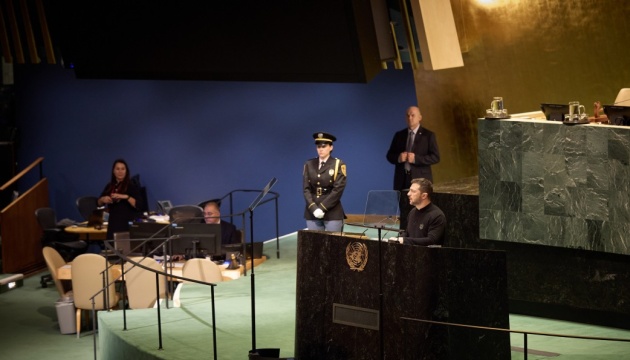Merz's Green Light: Ukraine's Potential For Deep Strikes Into Russia

Table of Contents
Ukraine's Current Long-Range Capabilities
Ukraine's ability to conduct deep strikes into Russia hinges on several factors, most importantly its arsenal of long-range weapons and its intelligence capabilities.
Weapon Systems
Ukraine's long-range strike arsenal is a constantly evolving landscape, heavily reliant on Western support. Currently, key weapon systems include:
- HIMARS (High Mobility Artillery Rocket System): While primarily designed for shorter-range strikes, HIMARS' accuracy and mobility make it a valuable asset. Its range, however, limits its effectiveness in truly deep strikes.
- Storm Shadow cruise missiles: These air-launched missiles offer significantly extended range compared to HIMARS, enabling strikes deeper into Russian territory. Their precision and ability to hit strategically important targets make them particularly valuable.
- ATACMS (Army Tactical Missile System): The potential delivery of ATACMS missiles by the US would drastically increase Ukraine's range and firepower for deep strikes, allowing for the targeting of more distant high-value assets.
The accuracy and effectiveness of these systems are crucial for successful deep strikes. Factors such as weather conditions, target identification, and Russian countermeasures all impact their success rate. Limitations include the number of missiles available, potential for interception, and the overall logistical challenges of maintaining and supplying these advanced weapon systems.
Targeting and Intelligence
Accurate intelligence gathering is paramount for effective deep strikes. Successful operations require precise targeting data to minimize collateral damage and maximize impact. Sources of intelligence include:
- Satellite imagery: Provides crucial information about target locations and infrastructure.
- Human intelligence (HUMINT): Information gathered from human sources within Russia is invaluable but often carries higher risks.
- Signal intelligence (SIGINT): Interception of Russian communications can reveal valuable information about troop movements and military operations.
However, obtaining reliable and timely intelligence within Russia remains challenging. Russian counterintelligence measures and the inherent difficulties in operating deep within enemy territory make this a continuous struggle. Identifying and targeting high-value assets, such as command centers and ammunition depots, requires sophisticated intelligence gathering and analysis.
Logistics and Support
Sustaining deep strikes requires a robust logistical network. The challenge lies in supplying ammunition, maintaining weapon systems, and ensuring adequate repair and replacement capabilities. This task is greatly aided by:
- Western allies: The provision of ammunition, spare parts, and training by NATO countries is vital for sustaining long-range strike operations.
- Improved infrastructure: Maintaining supply lines and efficiently transporting equipment remains a key logistical concern.
- Potential bottlenecks: Transportation routes, storage facilities, and the overall capacity of Ukraine's logistics network can all create bottlenecks, impacting the frequency and effectiveness of deep strikes.
Potential Targets and Strategic Objectives
The potential targets for Ukrainian deep strikes are diverse, encompassing military installations, critical infrastructure, and assets with significant political and psychological impact.
Military Installations
High-value military installations within Russia are prime targets for deep strikes. These could include:
- Air bases: Disrupting Russian air power by targeting air bases would have a considerable effect on the overall war effort.
- Ammunition depots: Destroying these depots can severely hamper Russian resupply capabilities.
- Command centers: Targeting command centers can disrupt Russian military command and control, potentially leading to chaos and disorganization.
Destroying these targets could significantly weaken the Russian military's capacity to sustain its offensive operations.
Infrastructure
Targeting critical infrastructure within Russia could also be a strategic objective:
- Energy grids: Disrupting the Russian energy grid could significantly impact the civilian population and hamper industrial production.
- Transportation networks: Targeting key rail lines and roads could disrupt Russian logistics and the movement of troops and supplies.
However, targeting infrastructure carries a high risk of civilian casualties and potential humanitarian consequences, which must be carefully weighed against the military benefits.
Political and Psychological Impact
Deep strikes into Russia have the potential to significantly impact the morale of Russian troops and the civilian population:
- Decreased morale: Demonstrating the vulnerability of Russia to Ukrainian attacks could demoralize Russian forces.
- Public pressure: The impact of deep strikes on the Russian population might increase public pressure on the Kremlin to end the war.
However, this strategy also carries significant risks, including the potential for escalation and increased Russian aggression.
Risks and Challenges of Deep Strikes
Deep strikes into Russia are not without substantial risks and challenges.
Escalation
One of the most significant risks is the potential for escalation by Russia:
- Increased aggression: Russia might respond with increased military activity in Ukraine or other escalatory measures.
- Nuclear escalation: While unlikely, the potential for nuclear escalation remains a grave concern and requires careful consideration.
- De-escalation strategies: Effective communication and diplomatic efforts will be crucial to manage risks and avoid uncontrolled escalation.
Operational Risks
Conducting deep strikes involves inherent operational risks:
- Interception: Russian air defenses pose a significant threat to incoming missiles and drones.
- Collateral damage: The risk of civilian casualties and unintended damage to non-military targets is high.
- Countermeasures: Russia's capacity to adapt and counter Ukrainian strikes is a factor that must be continually assessed.
International Implications
Ukrainian deep strikes will have significant international implications:
- International reaction: The international community's response will be heavily influenced by the nature and scale of the strikes.
- International law: Questions concerning adherence to international law and the principles of proportionality will arise.
- NATO involvement: The potential for increased NATO involvement due to escalating tensions requires close monitoring.
Conclusion
"Merz's Green Light" represents a significant shift in the Ukraine conflict. Ukraine's capacity for deep strikes into Russia depends on a complex interplay of factors, including the availability of advanced weapon systems, the effectiveness of intelligence gathering, logistical support, and the ability to mitigate the risks of escalation. The potential targets are diverse, ranging from military installations to critical infrastructure, each carrying unique strategic implications and potential risks. While deep strikes offer the potential to weaken Russia's military capabilities and influence the course of the war, they also carry the significant risk of escalation and unintended consequences. Further research and analysis are needed to fully understand the long-term implications of "Merz's Green Light" and Ukraine's evolving deep strike capabilities. Continued monitoring of the situation and its geopolitical ramifications is crucial. Understanding the implications of Ukraine's deep strike capabilities, particularly the impact of "Merz's Green Light," is essential for comprehending the future trajectory of the conflict.

Featured Posts
-
 Veterans Day Psvs Eredivisie Title Win Thanks To Perisic And De Jong
May 28, 2025
Veterans Day Psvs Eredivisie Title Win Thanks To Perisic And De Jong
May 28, 2025 -
 Portekiz Kampi Ronaldo Nun Beklenmedik Goeruentueleri Fenerbahcelileri Heyecanlandirdi
May 28, 2025
Portekiz Kampi Ronaldo Nun Beklenmedik Goeruentueleri Fenerbahcelileri Heyecanlandirdi
May 28, 2025 -
 Skor Akhir Bali United Vs Dewa United Ramalan Head To Head Dan Pemain
May 28, 2025
Skor Akhir Bali United Vs Dewa United Ramalan Head To Head Dan Pemain
May 28, 2025 -
 Assessing Alejandro Garnachos Manchester United Situation Transfer Or Stay
May 28, 2025
Assessing Alejandro Garnachos Manchester United Situation Transfer Or Stay
May 28, 2025 -
 Descubre Pepper Premiere Lo Mejor De Pepper 96 6 Fm
May 28, 2025
Descubre Pepper Premiere Lo Mejor De Pepper 96 6 Fm
May 28, 2025
